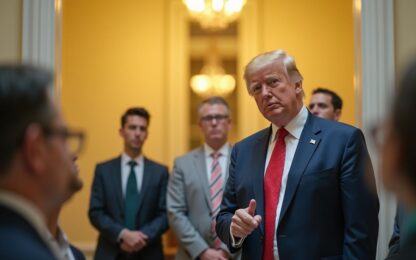
Amid Nvidia surge, Intel now goes on $100 billion spending spree in US
- Intel (INTC.O) has unveiled plans for a massive $100 billion spending spree across four U.S. states.
- Intel aims to build the world's biggest AI chip factory, says CEO Pat Gelsinger.
- Last year, Nvidia reported a revenue of $60.9 billion, marking a 126% increase from the previous year.
Intel (INTC.O) has unveiled plans for a massive $100 billion spending spree across four U.S. states.
The initiative comes in the wake of the global semiconductor shortage crisis and aims to bolster chip manufacturing capabilities on American soil.
Government support spurs Intel’s plans
Copy link to sectionThe tech giant secured a significant boost after the U.S. government announced federal grants and loans totaling $19.5 billion under the CHIPS Act.
With an eye on further support, Intel is also pursuing an additional $25 billion in tax breaks.
This news sent Intel’s shares soaring by 4% in premarket trading, reflecting investor confidence in the company’s strategic vision.
AI dominance
Copy link to sectionAt the heart of Intel’s ambitious plan lies the development of what CEO Pat Gelsinger heralds as “the largest AI chip manufacturing site in the world.”
The chosen location? Empty fields near Columbus, Ohio, where Intel aims to commence operations as early as 2027.
This move underscores Intel’s commitment to innovation and positions the company at the forefront of AI technology development.
Intel expansion plans
Copy link to sectionIntel’s investment plan isn’t confined to Ohio alone. The company intends to revamp existing facilities in New Mexico and Oregon while expanding its footprint in Arizona. This expansion aligns with a broader trend in the semiconductor industry, with rivals like Taiwan Semiconductor Manufacturing Co (TSMC) also investing in U.S.-based manufacturing capabilities.
Biden’s push for semiconductor renaissance
Copy link to sectionIntel’s strategic maneuvering also benefits from President Joe Biden’s push to revitalize domestic semiconductor manufacturing. The administration’s commitment to funding advanced chip manufacturing facilities aligns with Intel’s objectives, offering a much-needed boost to the company’s efforts to regain market dominance.
The influx of funds and government support comes at a critical juncture for Intel, which has grappled with declining market share and eroding profit margins in recent years.
Once the undisputed leader in semiconductor manufacturing, Intel faced fierce competition from TSMC in the 2010s, leading to a loss of its manufacturing edge and a subsequent decline in profitability.
While Intel charts its path to recovery, it faces stiff competition not only from traditional rivals like TSMC but also from emerging players like Nvidia, which has experienced a surge in market value in recent months.
Last year, Nvidia reported a revenue of $60.9 billion, marking a 126% increase from the previous year.
A significant portion of this growth originated from the company’s compute and networking division, encompassing Nvidia’s data center operations.
More industry news







